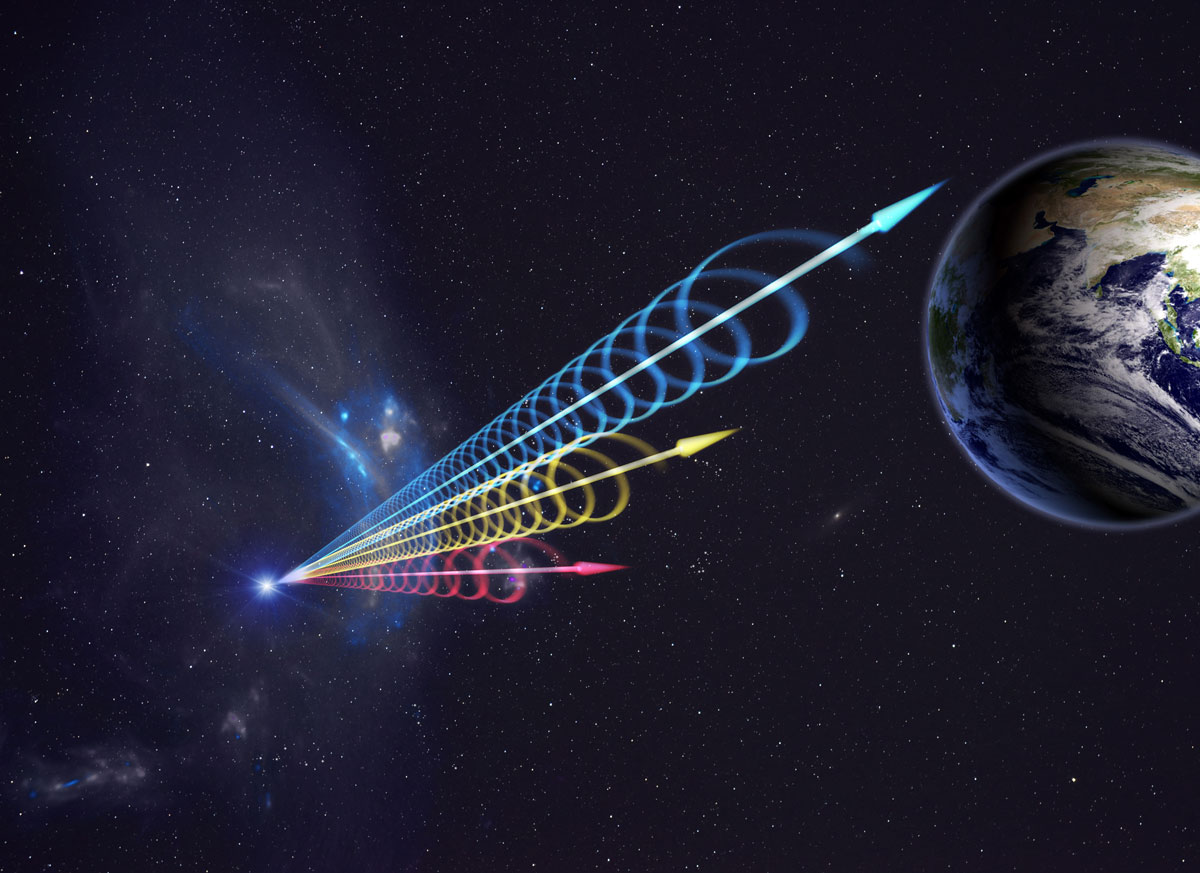Not So Fast: Discovery of Radio Burst Source May Be Flawed

Last week, a group of astronomers announced that they had for the first time discovered the source galaxy for a mysterious type of event known as a fast radio burst (FRB). But only a few days later, another group of scientists produced informal research that suggested otherwise.
FRBs release the same amount of energy in a single millisecond as the sun produces over 10,000 years. But what causes them and even where they come from has remained a mystery.
Evan Keane, a project scientist at the Square Kilometer Array Organization, and colleagues authored the original paper that claims to narrow down the source location of an FRB by tracing what they interpreted as the afterglow of whatever caused the FRB. But another group, led by Peter Williams, a postdoctoral astronomer at the Harvard-Smithsonian Center for Astrophysics, claims it could just be the belches of a monster black hole. [Top 10 Strangest Things in Space]
"We astronomers can currently only get relatively poor localizations for FRBs. For the search performed by the Keane team, they can narrow it down to an area about a quarter the size of the full moon," Williams told Space.com by email.
When Keane's team reviewed the region from which the FRBs originated, they found a faint glow within a galaxy along the line of sight. After watching it slowly fade over the course of six days, they concluded that the light had been produced by a sort of cataclysmic collision between powerful objects, such as a pair of merging black holes, which could have subsequently produced the original FRB.
But Williams and his team suggest that the glow is instead the result of the bright activity associated with a supermassive black hole at the heart of a galaxy, a feature known as an active galactic nuclei (AGN).
"The Keane team's paper does not consider the possibility that the origin galaxy is an AGN," Williams said. "Frankly, I'm not sure why this possibility was not investigated in the paper.")
Sign up for the Live Science daily newsletter now
Get the world’s most fascinating discoveries delivered straight to your inbox.
Questionable origins
Every day, an estimated 10,000 FRBs explode across the sky. Despite their abundance, only a handful have been detected since their discovery in 2007. Most of these have been found using the Parkes radio telescope in Australia.
Pinpointing the sources of FRBs has remained a challenge over the decade and a half since they were first spotted. A number of causes have been suggested for FRBs. These include collisions between powerful objects such as dense neutron stars, which would demolish the sources. Other researchers have suggested less violent origins, such as changes in the magnetic field of highly magnetized neutron stars (the remains of collapsed stars) known as magnetars, which would allow the source to survive the FRB process.
Keane's team followed the trail of the FRB back to a galaxy with a dim afterglow suggestive of a powerful collision. According to Williams, however, following the trail is inconclusive.
"You can fit a lot of galaxies in that search area, so your odds of seeing an unrelated radio variable are not so bad," Williams said.
According to Williams' co-author Edo Berger, a professor of astronomy at Harvard University, the location uncertainty region for the FRB is about 200 times larger than the size of the signal. The FRB could come from anywhere within that region. The radio waves could have even passed through the galaxy, and their source could be hidden on the other side, forever out of sight.
"One reason that FRBs are exciting is that radio pulses can travel through all sorts of stuff," Williams said. "They would have no problem passing through a galaxy."
Red flags
Most galaxies contain a supermassive black hole at their heart. In the Milky Way and others, the black hole is relatively quiet, sporadically consuming stars and dust. In others, material is constantly flowing into the black hole, and the resulting radiation produces a bright glow that can be seen across the universe. The strength of the signal can vary as the supply of material changes over time.
For Williams and his colleagues, the constant glow from the proposed source galaxy raised a red flag.
"I think that Keane et al glossed over the steady radio emission after the first six days," Berger said. "It was bright enough that only an AGN origin makes sense. This was what alerted us to a problem with their paper as soon as we read it."
Williams' team used the Very Large Array, run by the National Radio Astronomy Observatory, to observe the galaxy and found that the glow had not only remained steady but had brightened since the original observations, a finding Berger said supported the idea of an AGN source.
No current models suggest that an AGN could produce the fast radio bursts. Berger deemed them unlikely sources, because events that occur on such short timescales are difficult to produce near black holes. Williams also thinks it unlikely but not necessarily unreasonable.
"We know little enough about the physics of FRBs that I wouldn't want to say it's impossible," Williams said. "In fact, I wouldn't be shocked if an enterprising theorist gets inspired to cook up just such a model based on the past week's events."
Williams' team posted an informal paper online, which alerted other scientists of their conclusions.
"It looks like it comes from an AGN because of its spectrum and persistence," astronomer Avi Loeb, referring to the afterglow, told Space.com. Loeb serves as chairman of the Astronomy department and Direct of the Institute for Theory & Computation at Harvard University, and was not involved in either study.
Keane's team used the proposed source to "weigh" the material in the space it passed through. Their calculations matched models of the distribution of normal and dark matter through space. But according to Berger, those results could be a coincidence. The FRB could lie at approximately the same distance as the proposed source galaxy, which would give similar numbers even if it isn't in the same direction.
Loeb agreed that it was likely a coincidence.
"Given the error bars on the measurement, such a coincidence would not be unusual," he said.
Space.com reached out to the authors of the original research to ask for their thoughts on the idea of an AGN as the source of the glow.
"We are, of course, aware of [Williams'] work, and indeed are performing our own ongoing studies," Keane told Space.com.
He said that once the studies were complete, they would be reported in peer-reviewed scientific literature, "which is where scientific debate happens." He declined to comment on the informally published results posted by Williams.
"We really can't rush the scientific process," Keane said. "I'd have said the same to you if, a couple months ago, you had asked me about last week's or this week's Nature papers, when they were still in the peer-review process."
Williams and his colleagues intend to continue observing the proposed source galaxy, monitoring it for activity that might further support or deny the idea that the glow spotted by Keane's team came from an AGN rather than an FRB. Still, without more detailed observations, definitively pinpointing the source may prove impossible.
"We may never find out where this FRB came from, or even be able to conclusively prove that it did not come from the proposed galaxy," Williams said. "But I think we are well on our way to showing that there is a compelling alternative hypothesis that explains the galaxy observations without requiring that the FRB originated from the galaxy."
[Editor's Note: This article previously stated that Williams' team used NASA's WISE telescope for follow-up obervations, which was incorrect. The group made their observations using the Very Large Array, which is managed by the National Radio Astronomy Observatory.]
Follow Nola Taylor Redd on Twitter @NolaTRedd or Google+. Follow us at @Spacedotcom, Facebook or Google+. Originally published on Space.com











